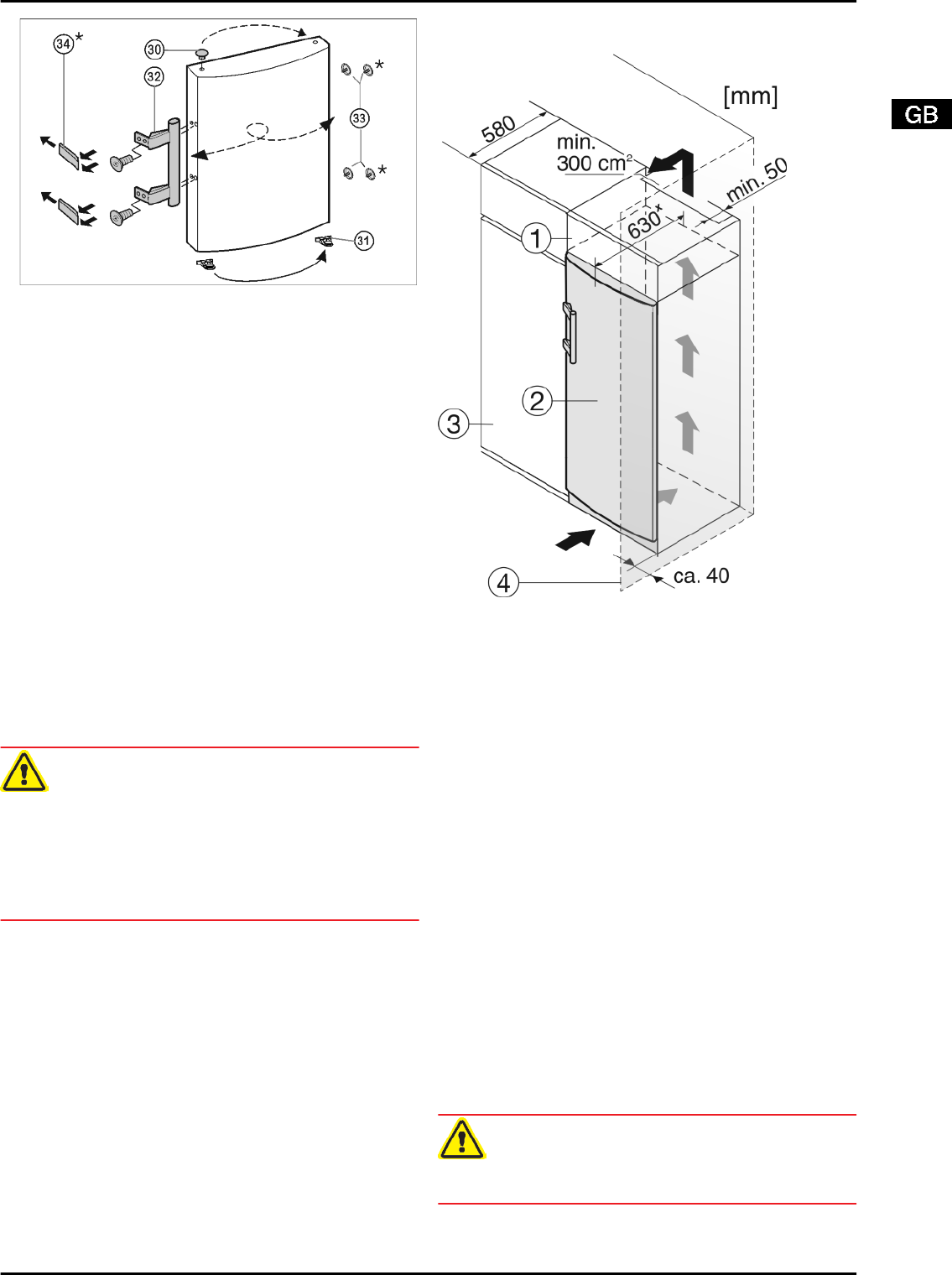
Fig. 7
u
Lift the stopper
Fig. 7 (33)
out of the door bearing bush and
transfer it.
u
Dismantle the door handle
Fig. 7 (32)
, stoppers
Fig. 7 (33)
and pressure plates*
Fig. 7 (34)
and transfer to the opposite
side.
u
When fitting the pressure plates on the opposite side, make
sure they snap properly into place.*
4.3.4 Fitting the door
u
Place the door from above onto the lower bearing pin
Fig. 5 (22)
.
u
Close the door.
u
Insert the upper turn hinge
Fig. 4 (12)
in the door on the new
hinge side.
u
Screw the upper turn hinge
Fig. 4 (12)
firmly into place (with
4 Nm)(2x Torx® 25)
Fig. 4 (13)
. Possibly make preliminary
holes with a bradawl or use a cordless screwdriver.
u
Snap the cover
Fig. 4 (10)
and cover
Fig. 4 (11)
into place at
the opposite side.
4.3.5 Aligning the door
u
Align the door to the appliance housing by way of the two
oblong holes in the bottom turn hinge
Fig. 5 (25)
. To do so,
unscrew the middle screw.
WARNING
Risk of injury due to the door dropping out!
If the bearing parts are not screwed into place firmly enough,
the door may drop out. This may lead to severe injuries. What
is more, the door may not close and therefore the appliance
may fail to cool properly.
u
Screw the turn hinges firmly into place with 4 Nm.
u
Check all of the screws and retighten if necessary.
4.4 Insertion into a row of kitchen units
Fig. 8
(1) Stack cabinet (3) Kitchen cabinet
(2) Appliance (4) Wall
x
For appliances supplied with wall spacers, the measurement
increases by 35 mm (see 4.2) .
The appliance can be inserted into a row of kitchen units. To
match the appliance
Fig. 8 (2)
to the height of the row of units,
a suitable stack cabinet
Fig. 8 (1)
can be fitted above the appli-
ance.
When installing with kitchen units (max. depth 580 mm), the
appliance can be positioned directly next to the kitchen cabinet
Fig. 8 (3)
. The appliance will project by 34 mm
x
at the sides and
50 mm
x
in the centre of the appliance in relation to the kitchen
cabinet front.
Ventilation requirements:
-
At the back of the stack cabinet there has to be a ventilation
duct of at least 50 mm depth throughout the width of the
stack cabinet.
-
The ventilation space under the ceiling has to be at least
300 cm
2
.*
-
the larger the ventilation space, the more energy-saving the
appliance is in operation.
If the appliance is installed with the hinges next to a wall
Fig. 8 (4)
, the distance between appliance and wall has to be at
least 40 mm. This corresponds to the projection of the handle
when the door is open.
4.5 Disposing of packaging
WARNING
Danger of suffocation due to packing material and plastic film!
u
Do not allow children to play with packing material.
Putting into operation
* Depending on model and options 7














